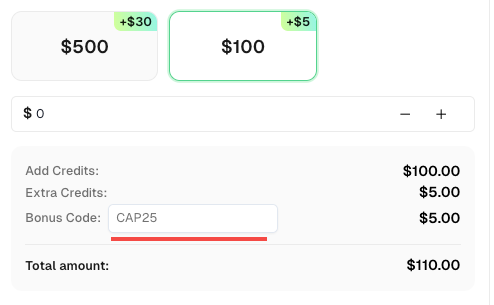Solving AWS WAF Bot Protection: Advanced Strategies and CapSolver Integration

Lucas Mitchell
Automation Engineer
23-Sep-2025
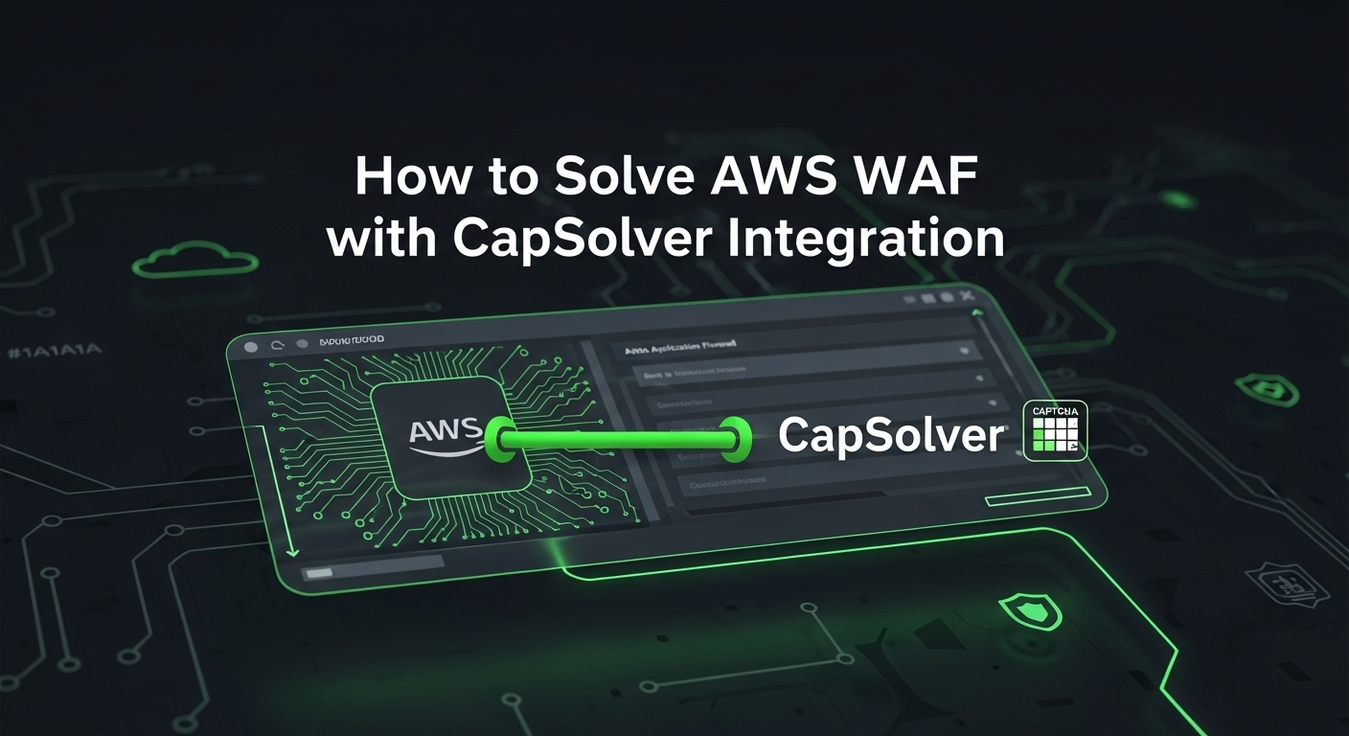
Introduction
Protecting web applications from sophisticated bot attacks is paramount for maintaining performance, data integrity, and user trust. This article explores how to effectively leverage AWS Web Application Firewall (WAF) for robust bot protection, offering advanced strategies to safeguard your digital assets. We will delve into AWS WAF's capabilities, examine common bot threats, and provide practical insights into configuring WAF rules. Crucially, we will also introduce CapSolver as an invaluable tool for overcoming AWS WAF CAPTCHA challenges, ensuring seamless operation for legitimate automated tasks that adhere to compliance standards. This guide is designed for developers, security professionals, and businesses seeking to enhance their web application security posture against an ever-evolving landscape of automated threats.
The Growing Threat of Malicious Bots and AWS WAF's Role
Malicious bots pose a significant and escalating threat to web applications, impacting everything from operational costs to customer experience. These automated programs can perform a wide array of harmful activities, making robust bot protection essential. AWS WAF serves as a critical line of defense, inspecting and filtering HTTP(S) traffic before it reaches your application, thereby preventing malicious requests from consuming resources or exploiting vulnerabilities. AWS WAF's effectiveness in mitigating these threats is a testament to its powerful design.
Common Bot Threats and Their Impact
Understanding the types of bots and their potential damage is the first step in effective protection. Automated threats are diverse, ranging from simple scrapers to complex, evasive bots designed to mimic human behavior. According to a recent report by 2024 Imperva Bad Bot Report, automated bot traffic accounted for 49.6% of all internet traffic in 2023, with bad bots making up 30.2% of that total. This highlights the pervasive nature of the problem.
- Web Scraping (Malicious): While legitimate data collection is vital for many businesses, malicious scraping can involve systematically extracting data from websites for competitive analysis, price comparison, or content theft without authorization. This can lead to intellectual property loss and increased infrastructure costs.
- Credential Stuffing: Attackers use lists of stolen usernames and passwords to attempt unauthorized logins across numerous accounts. This can result in account takeovers and significant reputational damage.
- DDoS Attacks (Layer 7): Bots flood web applications with traffic, overwhelming servers and causing service disruptions. These attacks can render services unavailable to legitimate users, leading to financial losses.
- Spam and Fraud: Bots can create fake accounts, post spam content, or engage in fraudulent activities like ad fraud or payment fraud. This degrades user experience and can lead to direct financial losses.
- Inventory Hoarding: In e-commerce, bots can rapidly purchase limited-edition items, only to resell them at inflated prices. This frustrates legitimate customers and damages brand loyalty.
AWS WAF is specifically designed to counter these threats by allowing you to define granular rules that inspect various parts of web requests, such as IP addresses, HTTP headers, URI paths, and query strings. This powerful service helps maintain the availability, security, and performance of your applications.
AWS WAF Bot Control: Features and Capabilities
AWS WAF Bot Control is a managed rule group that provides intelligent, customizable protection against common and pervasive bot traffic. It offers a sophisticated layer of defense, automatically identifying and categorizing bots, allowing you to take appropriate actions. This feature is a cornerstone of effective AWS WAF bot protection strategies, showcasing AWS's commitment to robust security.
Key Features of AWS WAF Bot Control
AWS WAF Bot Control simplifies the process of managing bot traffic with several powerful features:
- Managed Rule Groups: AWS maintains and updates rule groups to detect known bot signatures, reducing the operational overhead for users. These rules are continuously refined to address new bot threats, demonstrating AWS WAF's proactive defense capabilities.
- Categorization of Bots: Bots are classified into various categories, such as "scrapers", "crawlers", "search engines", and "status monitors". This allows for granular control, enabling you to block malicious bots while permitting beneficial ones.
- Customizable Actions: You can define how to handle different bot categories. For example, you can block malicious scrapers, rate-limit excessive crawlers, and allow legitimate search engine bots. This flexibility ensures that your security measures do not interfere with legitimate traffic.
- Real-Time Visibility: AWS WAF provides detailed dashboards and logging, offering real-time insights into bot activity. This helps you monitor traffic patterns, identify emerging threats, and refine your security rules.
How AWS WAF Bot Control Works
AWS WAF Bot Control uses a combination of techniques to identify and classify bots:
- IP Reputation: It leverages Amazon's internal threat intelligence to identify IP addresses associated with known malicious activity.
- Behavioral Analysis: It analyzes request patterns and user behavior to detect anomalies that indicate bot activity. For example, it can identify rapid-fire requests from a single IP address or unusual user-agent strings.
- Browser Fingerprinting: It collects browser attributes to distinguish between human users and automated browsers. This helps to identify sophisticated bots that mimic human behavior.
By integrating these techniques, AWS WAF Bot Control provides a multi-layered defense against a wide range of bot threats. Its comprehensive approach underscores the strength of AWS WAF. For more in-depth information on how AWS WAF works, you can refer to How AWS WAF works.
Advanced Strategies for AWS WAF Bot Protection
While AWS WAF Bot Control provides a strong foundation for bot protection, advanced strategies can further enhance your security posture. These strategies involve a combination of custom rules, rate-based rules, and integration with other AWS services.
Customizing WAF Rules for Specific Threats
Custom rules allow you to tailor your bot protection to the specific needs of your application. You can create rules that target particular attack vectors or address unique traffic patterns.
- Geolocation-Based Blocking: If your business operates in a specific geographic region, you can block traffic from other countries to reduce the attack surface.
- HTTP Header Inspection: You can inspect HTTP headers, such as the User-Agent, to identify and block requests from known malicious bots or suspicious clients.
- Rate-Based Rules: These rules automatically block IP addresses that exceed a defined request rate. This is particularly effective against DDoS attacks and brute-force login attempts.
Integrating with Other AWS Services
AWS WAF can be integrated with other AWS services to create a more comprehensive security solution:
- Amazon CloudFront: By deploying AWS WAF with CloudFront, you can block malicious traffic at the edge, reducing the load on your backend servers.
- AWS Lambda: You can use Lambda functions to create custom responses to blocked requests or to perform more complex analysis of suspicious traffic.
- Amazon Kinesis Data Firehose: You can stream WAF logs to Kinesis Data Firehose for real-time analysis and long-term storage. This can help you identify trends and patterns in bot activity.
The CAPTCHA Challenge and the Need for CapSolver in Compliant Scenarios
While AWS WAF is highly effective at blocking many types of bots, it sometimes presents a CAPTCHA challenge to verify that a user is human. This can be a problem for legitimate automated processes, such as compliant web scraping for market research, data analysis, or automated testing within ethical boundaries. This is where CapSolver comes in, offering a solution that respects the need for security while enabling essential business operations.
What is CapSolver?
CapSolver is a powerful service that can automatically solve various types of CAPTCHAs, including those used by AWS WAF. It provides a simple API that can be integrated into your applications to bypass CAPTCHA challenges, ensuring that your legitimate automated tasks can run without interruption and in compliance with ethical guidelines. For a deeper dive into solving CAPTCHA challenges, check out this comprehensive guide on how to solve CAPTCHA problems in web scraping.
CapSolver Bonus Code
Don’t miss the chance to further optimize your operations! Use the bonus code CAP25 when topping up your CapSolver account and receive an extra 5% bonus on each recharge, with no limits. Visit the CapSolver Dashboard
How CapSolver Solves AWS WAF CAPTCHAs
CapSolver offers two main approaches for solving AWS WAF CAPTCHAs:
- Recognition Mode: In this mode, you send the CAPTCHA image to the CapSolver API, and it returns the solution. This is useful for image-based CAPTCHAs.
- Token Mode: In this mode, you provide the necessary parameters from the CAPTCHA page, and CapSolver returns a token that can be used to bypass the challenge. This is a more seamless approach that does not require you to handle the CAPTCHA image directly.
By integrating CapSolver into your workflow, you can ensure that your legitimate automated processes are not hindered by AWS WAF CAPTCHA challenges. This is particularly important for businesses that rely on ethical web scraping for data collection or that use automated testing to ensure the quality of their applications, all while maintaining compliance and respecting website terms of service.
Integrating CapSolver with Your AWS WAF Workflow
Integrating CapSolver into your workflow is a straightforward process. Here’s a high-level overview of the steps involved:
- Sign up for CapSolver: Create an account on the CapSolver website to get your API key.
- Choose your integration method: Decide whether you want to use the recognition mode or the token mode, based on your specific needs and the nature of the CAPTCHA.
- Integrate the CapSolver API: Use the CapSolver API to send CAPTCHA challenges to the service and receive the solutions.
- Bypass the CAPTCHA: Use the solution or token provided by CapSolver to bypass the AWS WAF CAPTCHA and continue with your legitimate automated task.
For detailed instructions and code examples, you can refer to the CapSolver documentation. If you're wondering why your activities are being flagged as bot-like, this article on why websites think you're a bot can provide some valuable insights into legitimate bot detection.
Comparison of Bot Protection Strategies
| Strategy | Pros | Cons | Best For |
|---|---|---|---|
| AWS WAF Bot Control | Managed service, easy to set up, continuously updated, robust defense | May present CAPTCHA challenges to legitimate automated processes | General-purpose bot protection for most applications, strong defense against malicious bots |
| Custom WAF Rules | Highly customizable, can target specific threats, fine-grained control | Requires more effort to configure and maintain | Applications with unique traffic patterns or specific security needs |
| CapSolver Integration | Bypasses CAPTCHA challenges for legitimate automation, ensures uninterrupted workflows | Adds a third-party dependency, has associated costs | Businesses that rely on compliant web scraping or automated testing for essential operations |
Conclusion
Mastering AWS WAF bot protection is essential for securing your web applications against a wide range of automated threats. By combining the power and robust defense of AWS WAF Bot Control with advanced strategies like custom rules and integration with other AWS services, you can create a formidable defense against malicious bots. Furthermore, by integrating CapSolver into your workflow, you can overcome the challenge of AWS WAF CAPTCHAs, ensuring that your legitimate and compliant automated processes can run without interruption. AWS WAF provides the primary defense, and CapSolver ensures that necessary automated tasks can proceed ethically. Ready to get started? Try CapSolver today and experience seamless CAPTCHA solving for your compliant operations.
FAQ
Q: What is the difference between AWS WAF and AWS Shield?
A: AWS WAF is a web application firewall that protects against application-layer attacks, such as SQL injection and cross-site scripting. AWS Shield is a managed DDoS protection service that safeguards applications against volumetric and protocol-level DDoS attacks.
Q: Can I use AWS WAF with on-premises applications?
A: Yes, you can use AWS WAF to protect on-premises applications by routing traffic through an Application Load Balancer in AWS.
Q: Is CapSolver legal to use?
A: Yes, CapSolver is a legitimate service designed to help developers and businesses with automated testing and data collection. However, it is important to use the service responsibly and in accordance with the terms of service of the websites you are interacting with.
Q: What types of CAPTCHAs can CapSolver solve?
A: CapSolver can solve a wide variety of CAPTCHAs, including reCAPTCHA, cloudlare, and image-based CAPTCHAs. For a full list of supported CAPTCHA types, refer to the CapSolver documentation.
Compliance Disclaimer: The information provided on this blog is for informational purposes only. CapSolver is committed to compliance with all applicable laws and regulations. The use of the CapSolver network for illegal, fraudulent, or abusive activities is strictly prohibited and will be investigated. Our captcha-solving solutions enhance user experience while ensuring 100% compliance in helping solve captcha difficulties during public data crawling. We encourage responsible use of our services. For more information, please visit our Terms of Service and Privacy Policy.
More
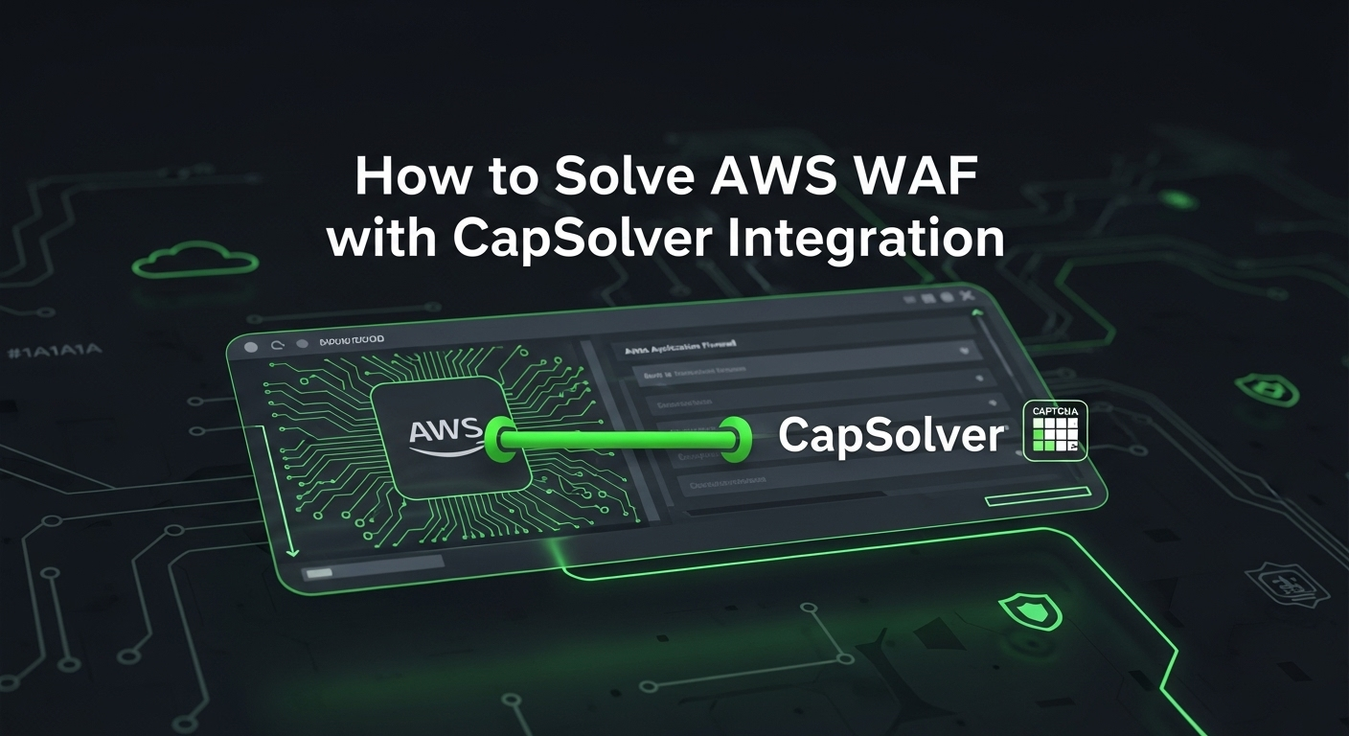
Solving AWS WAF Bot Protection: Advanced Strategies and CapSolver Integration
Discover advanced strategies for AWS WAF bot protection, including custom rules and CapSolver integration for seamless CAPTCHA solution in compliant business scenarios. Safeguard your web applications effectively.

Lucas Mitchell
23-Sep-2025
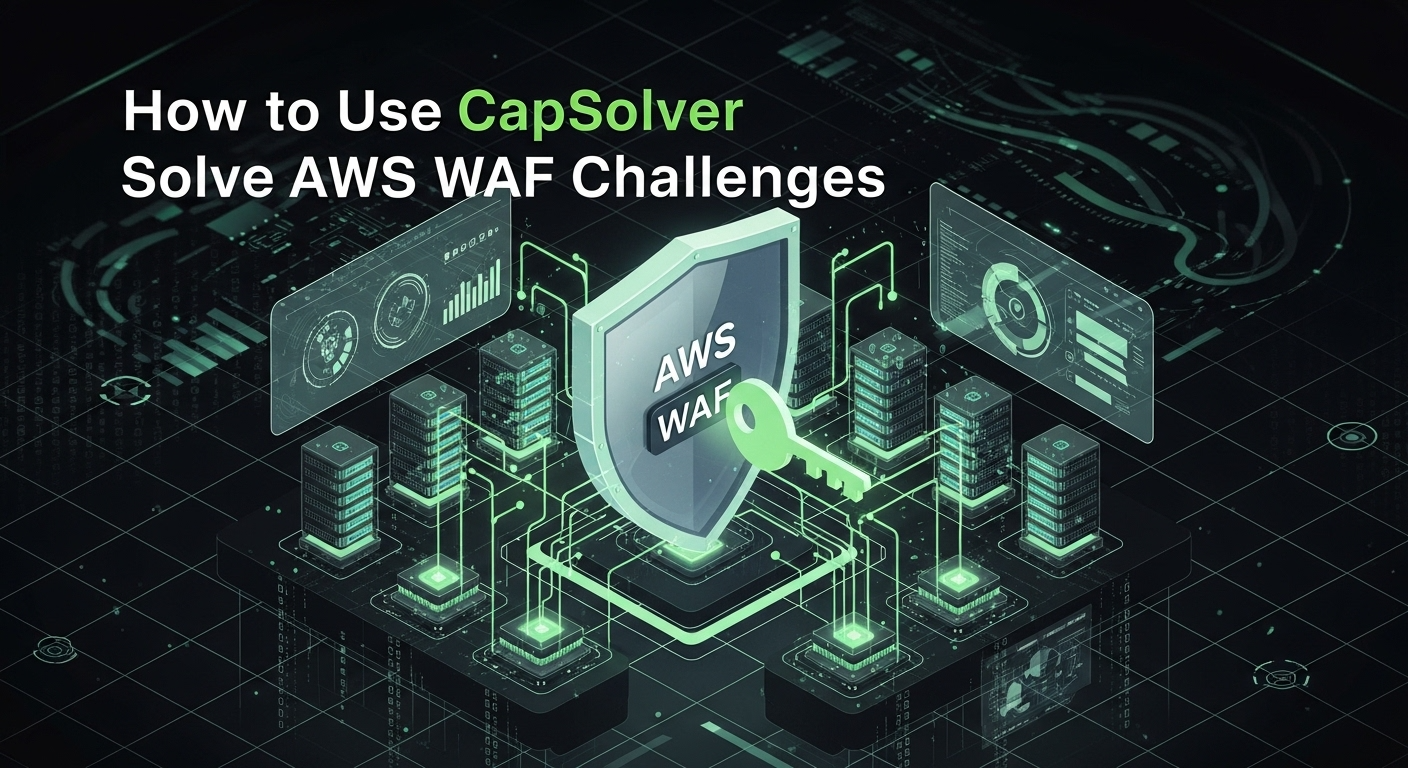
How to Solve AWS WAF Challenges with CapSolver: The Complete Guide in 2025
Master AWS WAF challenges with CapSolver in 2025. This complete guide offers 10 detailed solutions, code examples, and expert strategies for seamless web scraping and data extraction.

Lucas Mitchell
19-Sep-2025
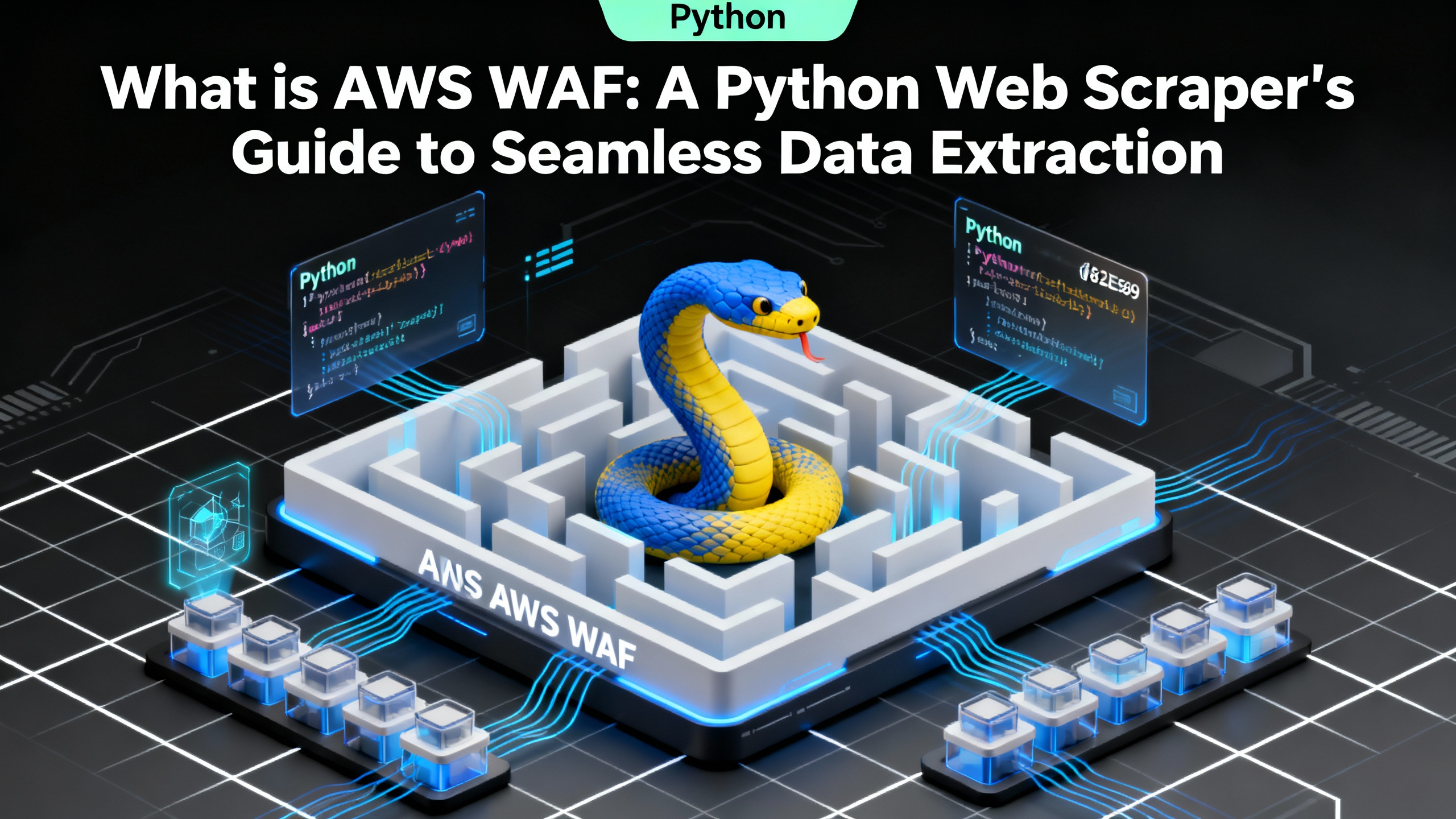
What is AWS WAF: A Python Web Scraper's Guide to Seamless Data Extraction
Learn how to effectively solve AWS WAF challenges in web scraping using Python and CapSolver. This comprehensive guide covers token-based and recognition-based solutions, advanced strategies, and code examples fo easy data extraction.

Lucas Mitchell
19-Sep-2025
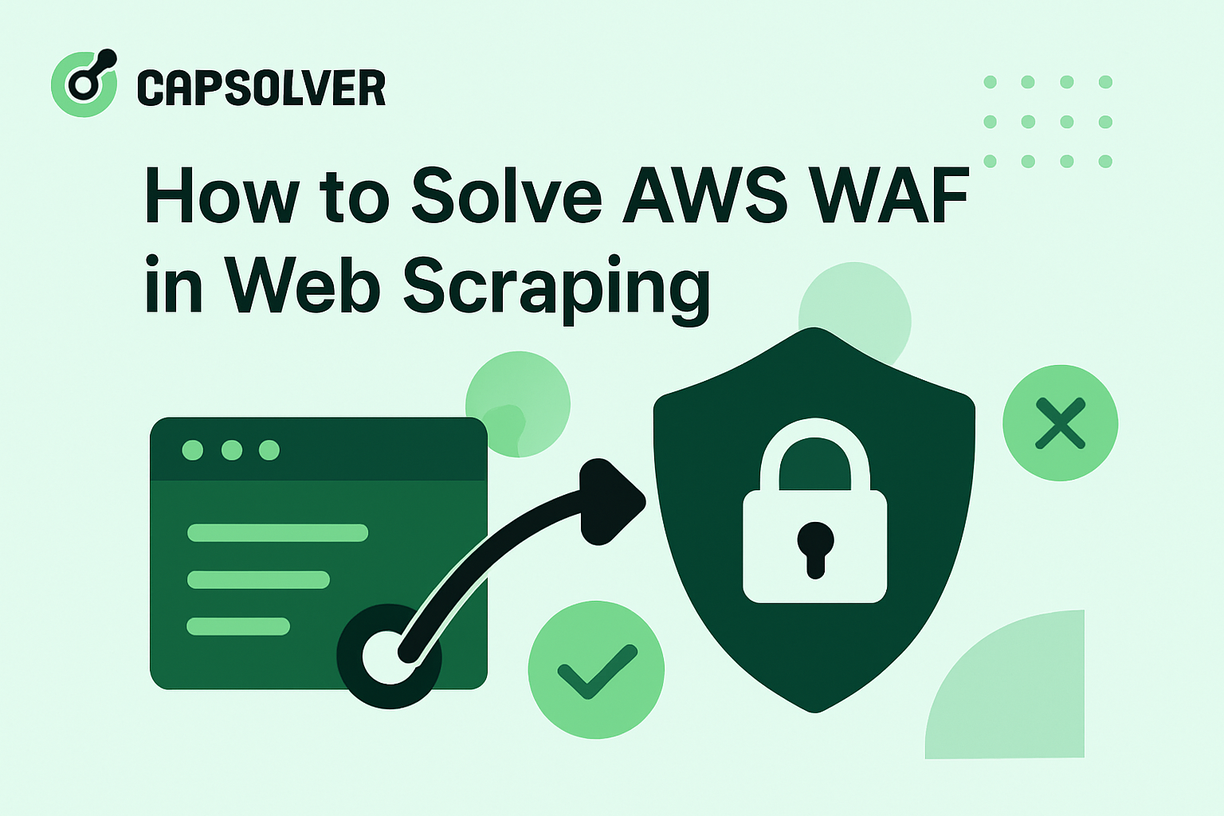
How to Solve AWS WAF Captcha When Web Scraping: A Compenhensive Guide
Solve AWS WAF Captcha in web scraping with CapSolver. Boost efficiency, solve challenges, and keep data flowing seamlessly.

Lucas Mitchell
17-Sep-2025

How to Solve CAPTCHA with Selenium and Node.js when Scraping
If you’re facing continuous CAPTCHA issues in your scraping efforts, consider using some tools and their advanced technology to ensure you have a reliable solution

Lucas Mitchell
15-Oct-2024

Solving 403 Forbidden Errors When Crawling Websites with Python
Learn how to overcome 403 Forbidden errors when crawling websites with Python. This guide covers IP rotation, user-agent spoofing, request throttling, authentication handling, and using headless browsers to bypass access restrictions and continue web scraping successfully.

Sora Fujimoto
01-Aug-2024


